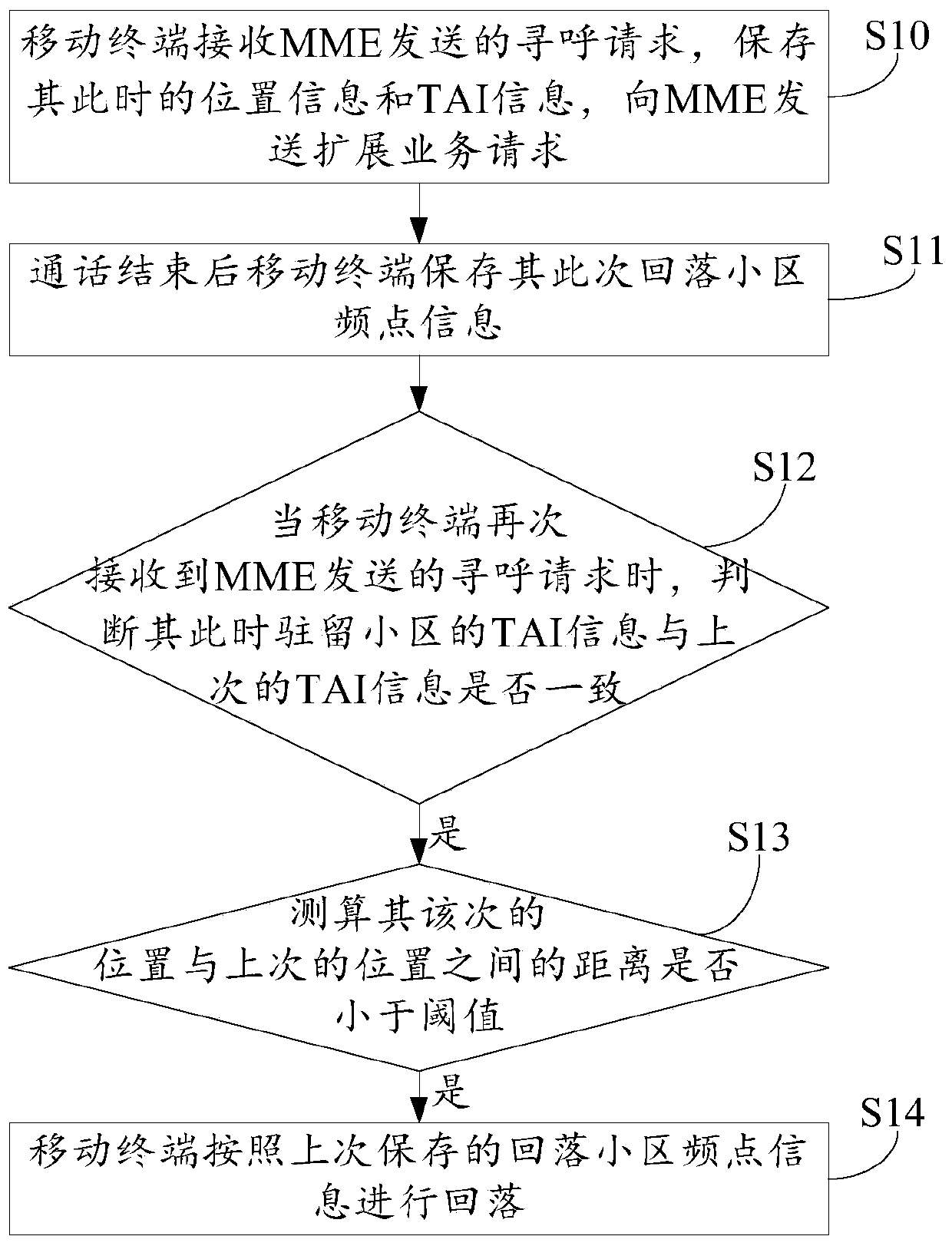Mobile terminal and cell fallback method thereof
A mobile terminal and cell technology, applied in the field of communications, can solve the problems of long call setup time and poor user perception, and achieve the effects of shortening call setup time, shortening fallback time, and shortening cell fallback time
- Summary
- Abstract
- Description
- Claims
- Application Information
AI Technical Summary
Problems solved by technology
Method used
Image
Examples
Embodiment 1
[0051] This embodiment provides a method for a mobile terminal to fall back to a cell, such as figure 1 shown, including:
[0052] Step S10: The mobile terminal receives the paging request sent by the MME, saves its current location information and TAI information, and sends an extended service request to the MME.
[0053] Step S11: After the call ends, the mobile terminal saves the frequency point information of the drop-back cell.
[0054] Step S12: When the mobile terminal receives the paging request sent by the MME again, it judges whether the TAI information of the cell it is camping on at this time is consistent with the last TAI information.
[0055] If yes, execute step S13: measure whether the distance between the current location and the last location is smaller than the threshold. If yes, execute step S14: the mobile terminal performs fallback according to the frequency point information of the fallback cell saved last time.
[0056] Wherein, the threshold is the...
Embodiment 2
[0059] This embodiment provides a method for a mobile terminal to fall back to a cell, such as figure 2 shown, including:
[0060] Step S10: The mobile terminal receives the paging request sent by the MME, saves its current location information and TAI information, and sends an extended service request to the MME.
[0061] Step S11: After the call ends, the mobile terminal saves the frequency point information of the drop-back cell.
[0062] Step S12: When the mobile terminal receives the paging request sent by the MME again, it judges whether the TAI information of the cell it is camping on at this time is consistent with the last TAI information.
[0063] If yes, execute step S13: measure whether the distance between the current location and the last location is smaller than the threshold. Wherein, the threshold is the signal coverage range of a base station. If yes, execute step S14: the mobile terminal performs fallback according to the frequency point information of t...
Embodiment 3
[0086] Based on the method for the mobile terminal to fall back to the cell provided in Embodiment 2, this embodiment provides a mobile terminal, such as Figure 4 As shown, it includes: a fallback request module 1, configured to receive the paging request sent by the MME, save the current location information and TAI information of the mobile terminal, and send an extended service request to the MME. The saving module 2 is used for saving the frequency point information of the drop-back cell of the mobile terminal after the end of the call. The first judging module 3 is used for judging whether the TAI information of the cell where the mobile terminal is camped on at this time is consistent with the last TAI information when the mobile terminal receives the paging request sent by the MME again. The second judging module 4 is configured to measure whether the distance between the current location of the mobile terminal and the previous location is smaller than a threshold when...
PUM
 Login to View More
Login to View More Abstract
Description
Claims
Application Information
 Login to View More
Login to View More - R&D Engineer
- R&D Manager
- IP Professional
- Industry Leading Data Capabilities
- Powerful AI technology
- Patent DNA Extraction
Browse by: Latest US Patents, China's latest patents, Technical Efficacy Thesaurus, Application Domain, Technology Topic, Popular Technical Reports.
© 2024 PatSnap. All rights reserved.Legal|Privacy policy|Modern Slavery Act Transparency Statement|Sitemap|About US| Contact US: help@patsnap.com










